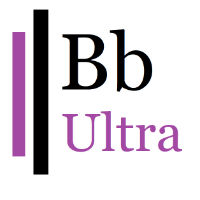Blackboard
Blackboard is UND's Learning Management System connecting students, faculty and staff both inside and outside of the classroom. It is used for courses, organizations, committees, departments and groups.
Starting Fall 2025, all of UND's Blackboard courses will be created in Blackboard Learn - Ultra Course View. Some courses and organizations may still utilize Blackboard Learn - Original Course View while they are transitioned to Ultra Course View. For assistance with any Original Course View functions, please review the appropriate Blackboard Help Support Pages below.
- Blackboard Learn Help for Instructors - Original Course View
- Blackboard Learn Help for Students - Original Course View
Resources
To learn more and view a tentative timeline, please visit our Ultra transition webpage. We encourage you to also visit these helpful Blackboard websites:
- Instructor Tutorial Videos: Check out the new design and workflows within Blackboard Ultra.
- Blackboard Instructor Help: Assistance using the new Blackboard Ultra Course Experience.
- Ultra Course Experience: Learn more about navigating within an Ultra Course.
